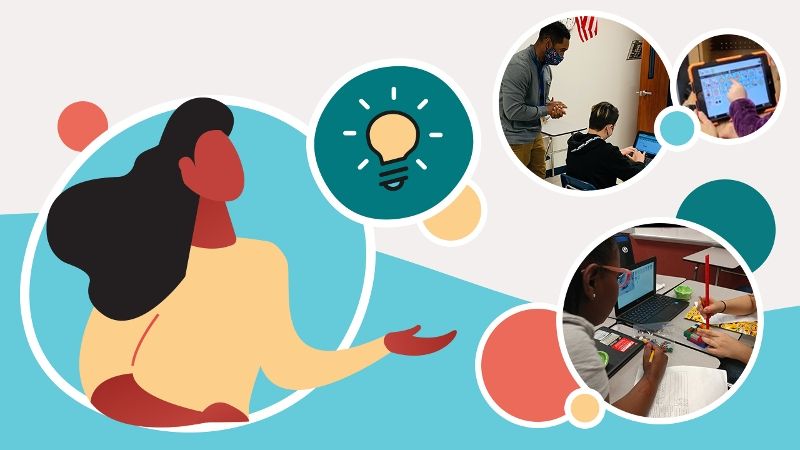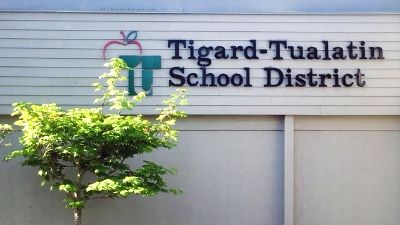Unify Inclusive Technology Decision-Making

Get Started Unifying Technology Decision-Making:
Individualized educational plans (IEPs) provide a student’s education team with clarity on what a child participates in and how a child engages within an educational program. IEP team members, including students, families, educators, direct service providers, and building administrators, serve as the decision-making body for these supports and services. Technology staff can also consider these plans as a foundation for how technology will support the learner to access the general curriculum.
Practice: The district ensures a continuum of technology services through the purchasing, deployment, management, and procurement of technology hardware and software to verify its interoperability with assistive technology.
Actions to unify inclusive technology decision-making:
- Collaborate to choose, manage, and deploy
- Ensure alignment
- Include individuals with disabilities
Learn From Our Partners

- Webpage: Glossary
- Webinar: Leading Inclusive Practices: Making Learning Accessible for Every Learner in Your Districtexternal site (EdWeb)
- Podcast: Creating A Framework For Inclusive Technology: Part 2 of a 2 Part Seriesexternal site (Consortium for School Networking)
- Blog Post: Why Effective IT Leadership Must Have Inclusive Technology Systems (external siteEdTech Magazine)
- Case Story: GUHSD, El Cajon, CA
Resources
-
Aligning IT, AT, & Accessibility for Virtual LearningPDF document, Center on Inclusive Technology & Education Systems (CITES) at CASTexternal site
-
Communicating Digital Accessibility Requirements, external site AEM Center at CASTexternal site
-
Procuring Accessible Digital Materials and Technologies for Teaching and Learning, AEM external siteCenter at CASTexternal site
-
AEM in the IEPexternal site, AEM Center at CASTexternal site
Tigard-Tualatin's Story

Tigard-Tualatin School District (Tigard, OR)
Oregon’s Tigard-Tualatin School District (TTSD) serves the suburban Portland metropolitan area with eighteen schools supporting students from pre-K through 12th grade. Within the District population, 18% of the students qualify for free or reduced lunch, 19% of students are English as a Second Language (ESL) learners, and 7% of students identify as having disabilities. In an effort to support TTSD’s mission, “Every student thrives in school and graduates prepared to succeed,” Tigard-Tualatin joined Oregon’s AEM Cohort in 2020, which works to ensure all students have access to educational materials as required by law and essential for success.
To support this work, the special education team, including leaders from Assistive Technology (AT), works collaboratively with the Information Technology (IT) team to support access to digital tools and resources for all students. The team works to be proactive versus reactive in providing “frictionless” access for students. To support the IT team with better understanding of accessibility and AT, the special education team invited a blind student to demonstrate how he uses software and his tablet with a refreshable Braille display. Most of the IT department staff had never seen the use of this equipment before. The demonstration helped staff understand how their work supports students with disabilities.
Once, as a security measure, the IT department installed a pop-up blocker that inadvertently blocked Bookshare, a web-based service that provides accessible formats of instructional materials for eligible students with disabilities. These students were left without access to their educational materials. When the IT director was told about the issue, she immediately turned off the blocker district-wide to restore access to Bookshare.. If the collaborative team had not been established, this may not have been remedied so quickly.
The team works to make access to educational materials as easy as possible for both students and staff. For students who use Bookshare, content is distributed to them directly via their online portal. This makes it simple for them to access books from any school-issued or personal device.
In addition, the AT team collaborates with the teaching and learning department to ensure any purchased curriculum is carefully vetted for accessibility. The district is also developing and implementing professional learning opportunities for educators to help ensure that any teacher-created content is accessible. One of the AT leaders has published more than 150 instructional videos for TTSD educators, students, and families. The videos demonstrate the implementation of specific assistive technology tools or accessibility features. In most cases, after viewing a video, users can implement the tools without additional help.
This school year, TTSD added the universal protocol for accommodations in reading (uPARexternal site) as one of the tools used to identify students who would benefit from auditory reading support. Staff members who have implemented uPAR remarked how easy it is to administer and understand the results. The Assistive Technology team’s hope is that this will further identify students who would benefit from assistive technology to help support reading skills.
Overall, TTSD continues to strive for an inclusive technology system with seamless access to accessible educational materials for all students. The team continues to evolve and to grow processes to support students and teachers.